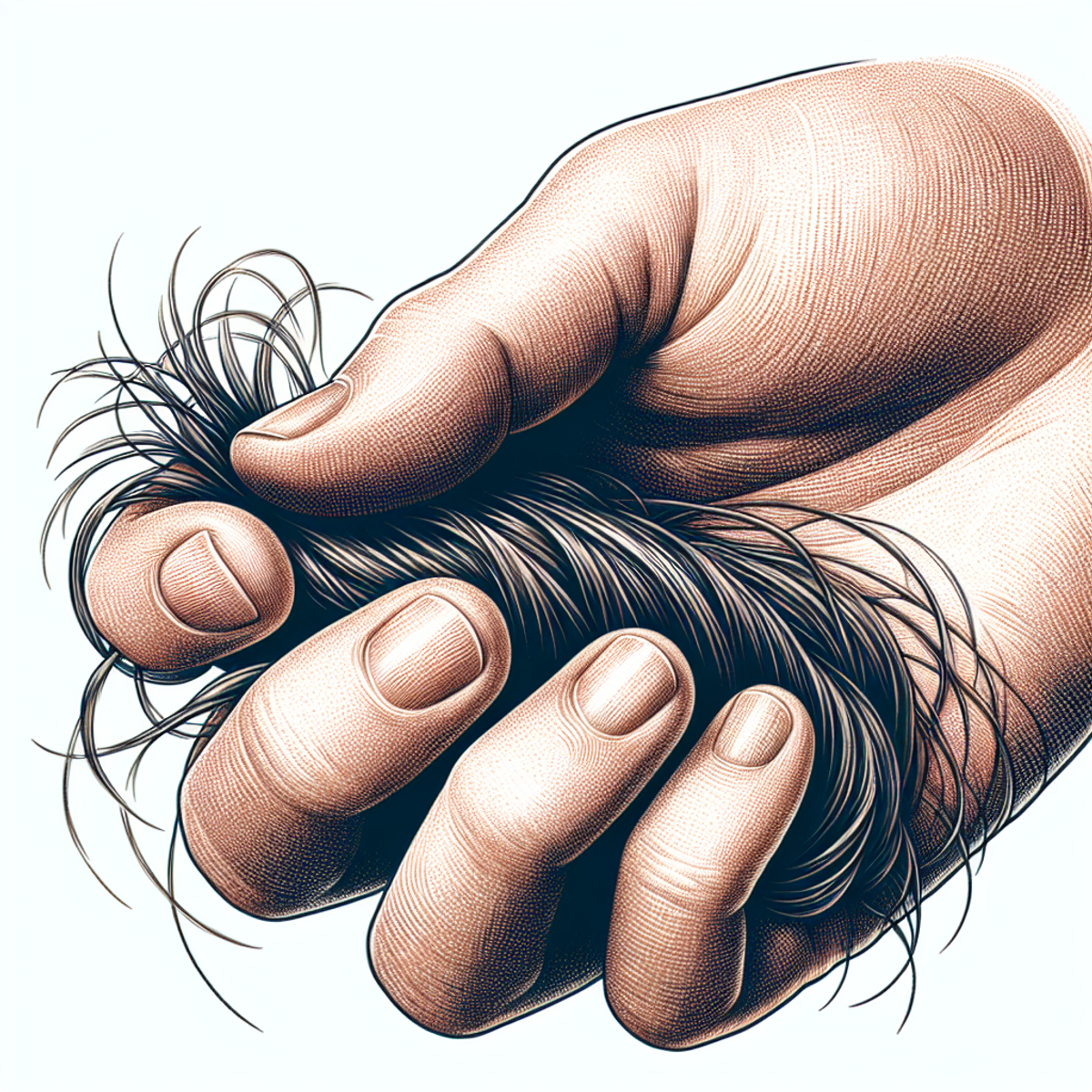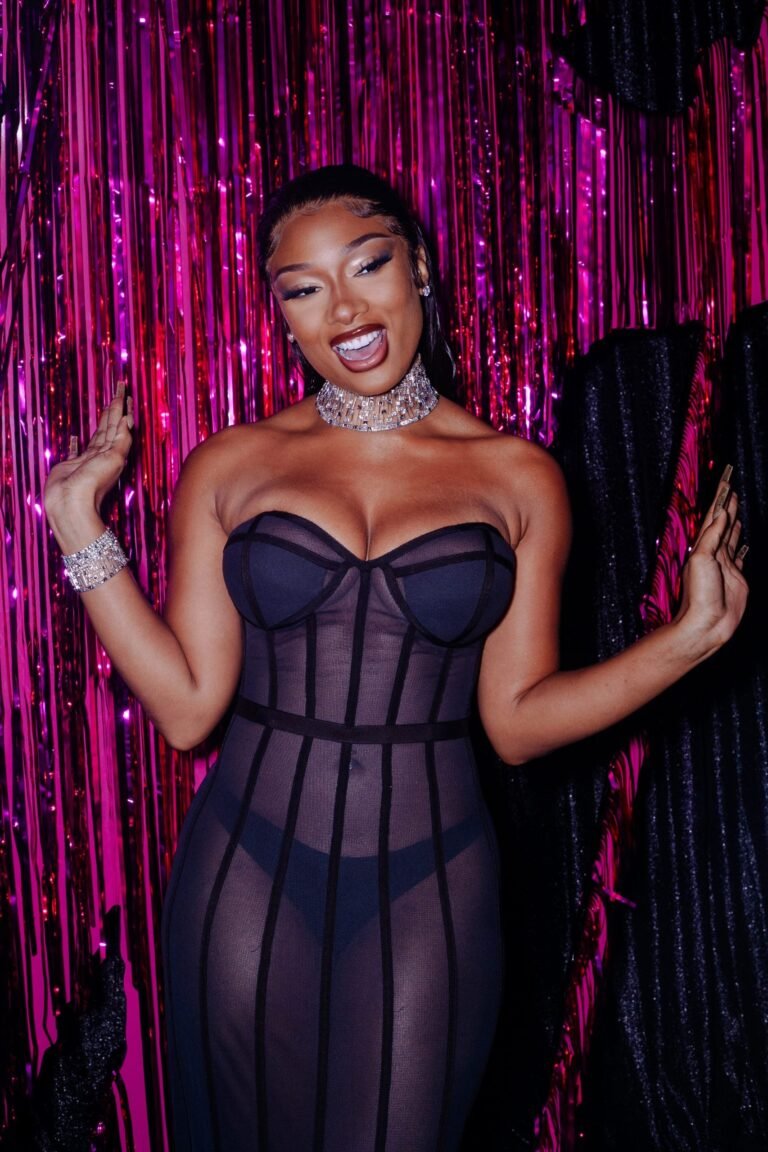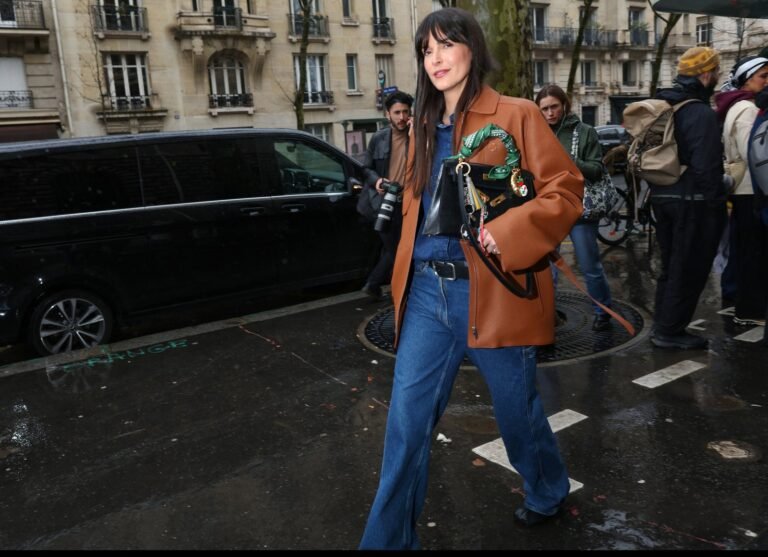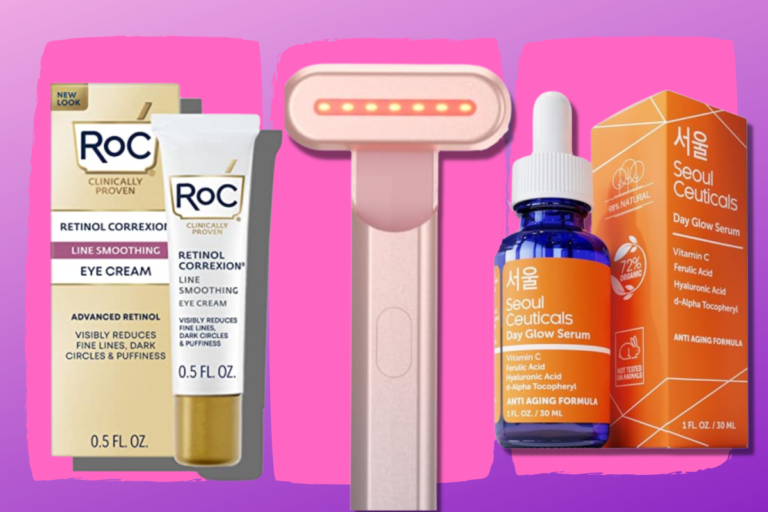“Hair Cracking” Is Trending on TikTok—Here’s Why Dermatologists Warn Against It


Introduction
The hair cracking trend on TikTok has become incredibly popular, with millions of users being fascinated by its mesmerizing videos. In this trend, people pull on their hair to make a satisfying popping sound. Although it may seem harmless and fun, dermatologists are strongly advising against taking part in this trend because of the potential dangers and risks involved.
The surge in popularity of the hair cracking trend on platforms like TikTok is undeniable. Countless videos showcasing this practice have gone viral, accumulating millions of views and likes. Users are attracted to the unique sensation and sound experience that hair cracking provides, leading to widespread participation and imitation of the trend.
However, it is important to acknowledge the potential dangers associated with this trend. Dermatologists and experts on scalp health are expressing concerns about the negative effects it can have on the scalp and overall health of the hair. Pulling forcefully on the hair can result in hair breakage, harm to the scalp, and even permanent hair loss. It’s crucial to understand that what may appear to be a harmless passing fad can have long-term consequences for your hair.
In the following sections, we will explore further:
- The origins and mechanism of hair cracking
- Its exponential growth on TikTok
- Any unverified benefits associated with this practice
- The potential risks involved
- Expert advice from dermatologists
- Strategies for spreading awareness and promoting responsible trends
By examining these aspects, we aim to highlight the significance of prioritizing both personal health and collective well-being when using social media platforms like TikTok.
So let’s find out why dermatologists are warning against the hair cracking trend on TikTok.
Understanding Hair Cracking: Definition, Origins, and Mechanism
Hair cracking, also known as scalp popping, is a dangerous TikTok trend that involves pulling on the hair of the scalp to produce a popping sound. The practice is believed to originate from parts of Asia and is said in some cultures to help relieve certain ailments like migraines or a bad cough, but it’s not supported by Western medicine. The popping sensation is an audible noise produced when the galea aponeurotica separates from the underlying tissue. There are no scientifically proven benefits to hair cracking, and there are real risks involved, including potential hair loss and damage to the scalp.
Comprehensive Definition
Hair cracking, or scalp popping, refers to the act of forcefully pulling on sections of hair to create a popping or cracking sound originating from the scalp. This trend has gained momentum on social media platforms like TikTok, where users showcase videos of themselves engaging in this practice.
Cultural Beliefs and Practices
The popularity of hair cracking can be attributed to deep-rooted cultural beliefs and practices in certain communities, especially in parts of Asia. It is often associated with traditional healing methods and is believed to have therapeutic effects for conditions like migraines or coughs. These cultural beliefs have contributed to the propagation of hair cracking in modern times, particularly through social media platforms where trends can quickly gain widespread attention.
Scientific Mechanism
The satisfying popping sensation experienced during hair cracking is due to the separation of the galea aponeurotica from the underlying tissue in the scalp. The galea aponeurotica is a dense connective tissue layer that covers the top of the skull. When force is applied to the hair shafts, this layer can separate from the deeper tissues, resulting in an audible popping sound. This physical sensation has been described as pleasurable by some individuals who partake in this trend.
The Viral Wave: Hair Cracking Taking Over TikTok
Hair cracking, also known as scalp popping, has quickly become popular on social media platforms, especially TikTok. In this section, we’ll explore how TikTok has played a significant role in making this trend go viral and the reasons behind its widespread popularity.
TikTok as a Breeding Ground for Trends
TikTok has become a powerful platform for spreading trends in various areas, ranging from dance challenges to DIY tricks, and now even unconventional wellness practices like hair cracking. Its easy-to-use interface and effective algorithms have turned TikTok into a hub for viral trends, allowing content to reach millions of viewers in no time.
Factors Driving Hair Cracking Videos on TikTok
The increase in hair cracking videos on TikTok can be attributed to several factors that are closely connected:
- Algorithmic Preferences: TikTok’s algorithm is programmed to boost content that receives high engagement. When users interact with hair cracking videos by liking, sharing, or commenting, the algorithm ensures that similar content is shown to a wider audience. This continuous cycle boosts the visibility and spread of hair cracking videos.
- User Participation: TikTok’s interactive nature encourages users to imitate and share popular trends. When people see hair cracking videos getting lots of attention and positive feedback, they feel motivated to create their own versions, thus keeping the cycle of content creation and consumption going.
- Sensational Appeal: The unique sound and visual effects of hair cracking make it perfect for short and captivating videos. The satisfying noise produced during the crack combined with the instant gratification it brings aligns with TikTok’s preference for eye-catching content.
TikTok’s influence goes beyond just providing entertainment; it has become a driving force behind not only the rise of hair cracking but also other unconventional trends. The combination of algorithmic dynamics and user participation fuels the rapid spread of these trends, which calls for a careful examination of their impact on individuals’ well-being and public health.
The Lack of Substantiated Evidence: Debunking Hair Cracking Benefits
Hair cracking, also known as scalp popping, has gained popularity on social media platforms like TikTok. While this trend may have traditional roots and cultural significance in certain communities, the lack of substantiated evidence supporting its therapeutic benefits is a cause for concern. Here, we explore the dearth of scientific research and the tension between traditional healing methods and Western medical perspectives.
The Lack of Scientific Research
Despite hair cracking’s long-standing presence in certain cultures, there is a noticeable absence of rigorous scientific studies supporting its therapeutic benefits. While anecdotal evidence and personal testimonials may exist, these do not meet the standards required for substantiating any claims.
In fact, this lack of substantiated evidence is not exclusive to hair cracking alone. Many alternative practices often face similar challenges when it comes to scientific validation. However, it is important to approach such practices with caution and critical thinking, especially when they involve potential risks or uncertainties.
Traditional Healing Methods vs. Western Medicine
Hair cracking’s popularity can be attributed to its association with traditional healing practices in some communities. However, it is important to recognize that traditional healing methods and Western medicine often differ in their approaches and perspectives. What may be considered effective or beneficial in one cultural context may not align with the principles and practices of Western medicine.
It is crucial to acknowledge that while alternative practices and cultural beliefs can provide valuable insights into different approaches to health and well-being, they should not replace evidence-based medical care. The absence of scientific evidence supporting hair cracking’s therapeutic benefits raises concerns about its safety and efficacy.
By debunking the unverified claims surrounding hair cracking, we can encourage a more informed understanding of this trend. It is important to promote discussions that explore the potential risks associated with participating in practices without substantiated evidence.
Potential Risks and Perils for Your Tresses: Unveiling the Dark Side of Hair Cracking
Hair cracking may seem like a harmless trend on TikTok, but it comes with potential risks and perils for your hair. In this section, we will discuss the negative effects of frequent or aggressive hair cracking sessions on scalp health and share stories from people who have experienced problems because of this trend.
1. Scalp Damage
When you pull on your hair repeatedly during hair cracking, it can damage your scalp. The force applied to the hair follicles can cause inflammation, irritation, and even bruising of the scalp tissue. This trauma can disrupt the natural growth cycle of your hair, potentially leading to thinning or hair loss.
2. Hair Loss
One of the most worrying risks of hair cracking is hair loss. The excessive pulling and tugging can weaken the hair follicles over time, causing breakage and shedding of the hair strands. Additionally, the repeated stress from aggressive hair cracking can harm the delicate structures that support healthy hair growth.
3. Scalp Sensitivity
The popping feeling you get during hair cracking might seem like a sign of relief or relaxation, but it’s important to know that this sensation occurs when the galea aponeurotica separates from the underlying tissue. This separation can make your scalp more sensitive and prone to discomfort or pain, especially if you do multiple sessions of hair cracking.
Real-Life Stories
Sarah’s Story:
Sarah, a TikTok user who used to do the hair cracking trend, shared her experience of scalp damage and hair loss after months of doing it regularly. She noticed more hair falling out and her strands becoming thinner, which made her upset and frustrated. Sarah wishes she had known about the potential risks before joining in on this trend.
John’s Experience:
John, another person who tried hair cracking, developed scalp sensitivity and irritation after only a few sessions. He felt uncomfortable and saw redness on his scalp, which didn’t go away even after he stopped doing the trend. John consulted a dermatologist, who confirmed that his scalp had been harmed because of the aggressive hair pulling.
These real-life stories are important to consider when thinking about the potential risks of hair cracking. While these are individual experiences, they show the serious problems that can come from taking part in this trend without knowing or being careful about the dangers.
By talking about the possible harms of hair cracking, we want to encourage responsible choices and informed decisions when deciding to join viral trends like this one.
Expert Advice: What Dermatologists Say About Hair Cracking
Hair cracking, also known as scalp popping, has garnered significant attention on social media platforms like TikTok. While some may perceive it as a harmless or even beneficial practice, dermatologists strongly caution against the popularization of hair cracking due to its potential adverse effects on scalp health.
Dermatologists’ Perspective
Dermatologists, who specialize in the treatment of skin, hair, and nails, emphasize the importance of understanding the risks associated with hair cracking. From their professional opinion, dermatologists highlight the following specific reasons why individuals should refrain from participating in this trend:
- Scalp Trauma: Dermatologists underscore the risk of inflicting trauma on the scalp through aggressive pulling or manipulation of the hair. This can lead to inflammation, irritation, and damage to the delicate tissues of the scalp.
- Hair Damage: Pulling on the hair during cracking sessions can result in hair breakage and weakening of the hair shaft. Over time, this may contribute to noticeable hair loss and compromised hair quality.
- Follicle Disturbance: The repeated pulling involved in hair cracking can disrupt the hair follicles, potentially leading to follicle damage and hindering normal hair growth patterns.
Professional Recommendations
In lieu of engaging in potentially harmful practices like hair cracking, dermatologists offer practical recommendations for maintaining a healthy scalp. These alternatives not only promote scalp wellness but also align with evidence-based approaches endorsed by medical professionals:
- Gentle Scalp Massage: Instead of subjecting the scalp to forceful pulling, dermatologists advocate for gentle scalp massages using fingertips or specialized tools designed for stimulating circulation without causing harm.
- Scalp Care Products: Utilizing high-quality shampoos and conditioners that are formulated to nourish the scalp and support overall hair health can be an effective way to promote a healthy environment for optimal hair growth.
- Professional Consultation: Individuals experiencing scalp-related concerns are encouraged to seek guidance from dermatologists or healthcare providers to address any underlying issues and receive personalized care tailored to their specific needs.
By heeding the advice of dermatologists and embracing scalp-friendly practices, individuals can prioritize their scalp health while avoiding potential risks associated with hair cracking.
The insights provided by dermatologists underscore the significance of informed decision-making when it comes to adopting trends and rituals that impact our well-being. It’s essential to consider expert perspectives and prioritize responsible practices for maintaining a healthy scalp amidst evolving social media trends.
Taking Action: Spreading Awareness and Promoting Responsible Trends
As social media users, we have the power to shape trends and foster a culture of informed choices. It is crucial that we take action to spread awareness about the potential risks associated with the hair cracking trend on TikTok and promote safe practices. Here are some strategies to consider:
- Educate Others: One of the most effective ways to combat the spread of harmful trends is through education. Take the time to learn about the potential dangers of hair cracking and share this information with your friends, family, and followers on social media. You can create informative posts or videos that highlight the risks and encourage responsible behavior.
- Adhere to Community Guidelines: Platforms like TikTok have community guidelines in place to ensure a safe and positive user experience. Familiarize yourself with these guidelines and encourage others to do the same. By following these rules, you can help create a safer online environment and reduce the visibility of dangerous trends like hair cracking.
- Thoughtful Engagement: When interacting with content related to hair cracking on TikTok or any other platform, take a thoughtful approach. Instead of simply liking or sharing these videos, consider leaving a comment expressing your concerns about the potential risks involved. Engage in respectful discussions with others who may have different perspectives or knowledge about the trend.
- Support Positive Alternatives: While it’s important to discourage harmful trends like hair cracking, it’s equally important to promote positive alternatives that prioritize scalp health. Encourage others to explore safer practices for maintaining a healthy scalp, such as regular scalp massages using gentle techniques or incorporating nourishing hair care products into their routine.
By taking these actions, we can make a difference in spreading awareness and promoting responsible trends on social media platforms like TikTok. Remember that our collective efforts can have a significant impact on shaping online communities and prioritizing both personal health and collective well-being.
“Education is the most powerful weapon which you can use to change the world.” – Nelson Mandela
Conclusion
As the hair cracking trend continues to gain traction on TikTok, it is crucial to reflect on the potential dangers and risks associated with this viral phenomenon. Dermatologists strongly caution against participating in this trend, emphasizing the importance of prioritizing personal health and collective well-being on social media platforms like TikTok.
In conclusion, here are a few key takeaways:
- Think before you participate: The allure of trends on TikTok can be tempting, but it is essential to consider the potential consequences before engaging in activities like hair cracking. Educate yourself about the risks involved and make informed choices.
- Listen to the experts: Dermatologists have spoken out against hair cracking, highlighting the lack of scientific evidence supporting any therapeutic benefits and pointing out the potential risks to scalp health. Take their advice seriously and prioritize your well-being.
- Promote responsible trends: As social media users, we have the power to shape trends and foster a culture of informed choices. Spread awareness about the potential risks of hair cracking by sharing credible information and engaging in thoughtful conversations.
- Adhere to community guidelines: Platforms like TikTok have community guidelines in place for a reason—to ensure user safety and well-being. By following these guidelines and reporting harmful content, we can create a safer online environment for everyone.
Remember, personal health should always come first. While trends may come and go, our well-being should remain a top priority. Let’s be mindful of the potential risks associated with hair cracking and make responsible choices when participating in viral trends on social media platforms like TikTok.









